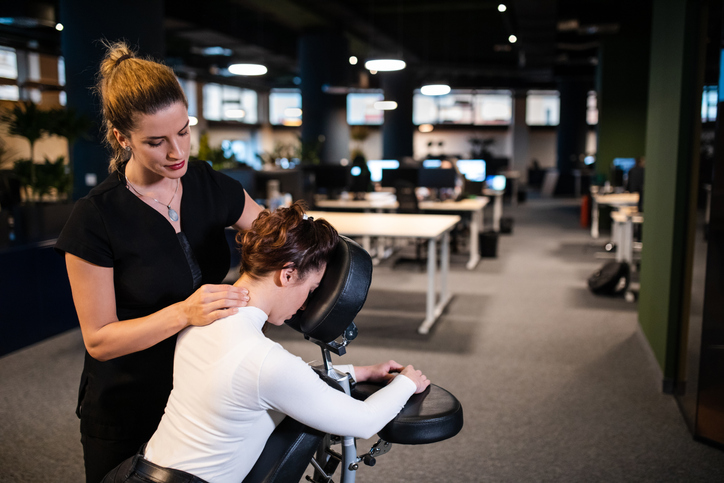Pain
The Relationship Between Poor Posture and Neck Pain

Age-related “wear and tear” and poor posture are the most common causes of neck pain. Poor posture strains the muscles in the neck and back and increases stress on the spine. In order to prevent and treat neck pain associated with poor posture, it is important to recognize how posture impacts the way the neck feels, moves, and functions.
Good posture vs. poor posture
Proper posture involves maintaining the three natural curves of the spine — one in the neck, one in the mid back, and one in the low back. The ears should be in line with the shoulders, and the shoulders should be in line with the hips.
Poor posture in the cervical spine (neck) involves angling or tilting the neck forward, with the head in front of the shoulders rather than directly above them. This can cause a variety of issues, including the following:
- Hunched upper back
When the head is positioned forward, the shoulders are often hunched, and the upper back is rounded. This can cause pain in the neck, shoulders, and upper back. - Increased stress on the cervical spine
Every inch that the head is tilted forward adds 10 pounds of weight to the cervical spine. Since the average head weighs between 10-12 lbs., leaning forward just one inch doubles the weight on the cervical spine. - Hyperflexion and hyperextension
With poor posture, the lower cervical spine is hyperflexed, meaning that it is bent past its safe range of motion. The upper cervical spine, on the other hand, hyperextends, meaning that it straightens beyond its normal range of motion. This can cause the spinal cord and surrounding nerve roots to stretch beyond their normal limits.
Long-term impacts
Perpetual poor posture can have lasting impacts on the neck, including the following:
- Reduced mobility
Poor posture leads to muscle and joint stiffness. This can cause long-term reduction in the neck’s range of motion. - Muscle imbalances
Poor posture can cause certain muscles in the neck, back, and shoulders to shorten and tense or elongate and weaken. - Spinal degeneration
Poor posture places stress on the discs, vertebrae, and facet joints of the spine. This increases the risk of both osteoarthritis and degenerative disc disease.
How to fix forward head posture
“Normal” head posture varies widely from person to person. If forward head posture causes pain or other symptoms, the following tips may help:
- Practice proper posture
Proper posture can help prevent neck pain. The more proper posture is practiced, the stronger the habit will become. Good posture involves maintaining the three natural curves in the spine — one in the neck, one in the mid back, and one in the low back. The ears should be in line with the shoulders, and the shoulders should be in line with the hips. - Engage in strengthening exercises and stretches
Engaging in regular physical activity, such as strengthening exercises and stretches, builds and reinforces muscle and relieves tension. For example, practicing yoga can help the body hold better posture in the neck, shoulders, and back.
Additional source: Verywell Health

















